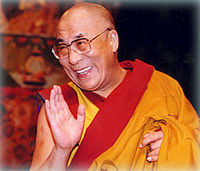151 years ago today, the Rival cities of Buda and Pest put their differences aside and their names together to form Budapest—the capital of Hungary still to this day. Divided by the Danube, the two cities were very different despite their proximity. The residents of Pest, on the eastern bank, were primarily Hungarian, while the residents of Buda, on the western bank, were of German origin. Two-thirds of the population of Budapest today live in what was Pest, where can also be found Parliament, while the President’s office and old king’s palace are found in Buda. READ more… (1873)

Despite its location as the capital and seat of power of Hungary in the 12th and 13th centuries and Pest as the economic center, Buda would become extremely diverse. Built originally as a fortress, there was a great influx of Turkic people during the Mongol invasions in the Middle Ages. After that, it was conquered by the Ottomans, who filled it with Muslims from the Balkans.
In 1686, an army containing over 74,000 men, including German, Dutch, Hungarian, English, Spanish, Czech, French, Croat, Burgundian, Danish, and Swedish soldiers, along with other Europeans as volunteers, artillerymen, and officers, took Buda from the Ottomans and rechristianized it.
In 1849, the first suspension bridge, the gorgeous Széchenyi Chain Bridge, was constructed across the Danube connecting Pest with Buda, bringing about a much freer relationship between the two cities. In 1873, Buda, Pest, and the third connecting town of Obuda, all united to form Budapest.
MORE Good News on this Date:
- The U.S. Capitol building held its first session of the U.S. Congress (1800)
- The Suez Canal opened, linking the Mediterranean and the Red Seas (1869)
- SALT I negotiations in Helsinki began aimed at limiting numbers of strategic nuclear weapons (1969)
- Canadian singer Gordon Lightfoot, known for his 1974 hit, If You Could Read My Mind was born (1938-2023)
- Actor Danny DeVito turns 80 years old today (1944)
- U.S. Rep. John Murtha, one of Congress’ most hawkish Democrats, called for an immediate U.S. withdrawal from Iraq (2005)
- Musician–poet Patti Smith won the National Book Award for her memoir Just Kids (2010)
275 years ago today, Nicolas Appert, the inventor of airtight food preservation was born in Châlons-en-Champagne, France.
The French inventor known as the ‘father of canning’, worked at his family’s inn until age 20, when he opened a brewery with his brother, and then was a head chef for 13 years.

At age 46, he began experimenting with ways to preserve foodstuffs, succeeding with soups, vegetables, juices, dairy products, jams, and syrups. He placed the food in a thick, large-mouthed bottle (pictured), leaving air space at the top and firmly sealing it with cork using a vise. After sealing it with wax, the bottle was then wrapped in canvas to protect it, then placed in boiling water for as much time as Appert deemed thorough for cooking the contents.
The first to do this on an industrial scale, by 1804 his House of Appert (La Maison Appert)—in Massy, near Paris—became the first food bottling factory in the world, years before Louis Pasteur proved that heat-killed bacteria. In honor of Appert, canning is sometimes called ‘appertization’.
6 years later, France gave Appert 12,000 francs on condition that he make his process public, so he published a book describing it. The first of its kind on modern food preservation methods, it had instructions so simple that the practice quickly became widespread.
6,000 copies of L’Art de conserver les substances animales et végétales (English: The Art of Preserving Animal and Vegetable Substances) were printed that year. Appert never truly understood why his method worked—as it was years before the science of bacteriology was developed. (1749)
And, 62 years ago today, President John F. Kennedy inaugurated Washington Dulles International Airport (IAD) serving the nation’s capital and Northern Virginia. The gorgeous facility is named after John Foster Dulles (1888–1959), the 52nd U.S. Secretary of State who served under President Dwight D. Eisenhower. The Dulles main terminal, with its peaked officer’s cap roof of cement and glass, is a well-known landmark designed by Finnish-American architect Eero Saarinen, who also designed the Gateway Arch in St. Louis, and the TWA Building (now hotel) near JFK Airport.

For those living and working in Northern Virginia’s suburbs, there are no words to summarize the convenience Dulles offers in place of Reagan National Airport in the heart of D.C.
Being close to both the Udvar-Hazy Center and the National Air and Space Museum, Dulles is often a transit location for space shuttles, including in 2012 Space Shuttle Discovery on its way to Udvar-Hazy, and in 1983 when the Space Shuttle Enterprise arrived at Dulles atop a modified Boeing 747 after touring Europe. It sat in a hangar until its installation at the Air and Space Museum. (1962)
And, on this day 74 years ago, the 14th His Holiness the Dalai Lama became Tibet’s official head of state at the age of 15.
Tenzin Gyatso was chosen to become the Dalai Lama when he was two, but had to flee his country for India during the 1959 Tibetan uprising against China. He has since received the Nobel Peace Prize and traveled the world, advocating for the welfare of Tibetans, teaching Tibetan Buddhism, investigating the interface between Buddhism and science, which enthralls him, and authoring books about the importance of compassion and how to live a happy life. (1950)
CHECK Out: All the Dalai Lama News Stories on Good News Network
And, 35 years ago today, the Velvet Revolution dawned in Czechoslovakia when a peaceful student demonstration in Prague was brutally beaten back, and it sparked the biggest wave of public protests in decades. Soon afterward, it resulted—without the use of weapons—in the successful overthrow of the oppressive communist regime. The Gentle Revolution unfolded in an astonishing 10-days—through a series of non-violent events that were smooth as velvet.

After only three days, the number of peaceful protesters assembled in Prague had swelled from 200,000 to an estimated half-million. A general two-hour strike involving all Czech citizens was then held on November 27—and the next day the Communist Party announced they would give up their monopoly on political power.
The barbed wire was removed from the border with West Germany and Austria in early December, as other communist governments were falling and the Berlin Wall opening. On December 10, Communist President Gustáv Husák appointed the first largely non-communist government in Czechoslovakia since 1948, then resigned. Before the year’s end, Alexander Dubček was elected speaker of the parliament and playwright Václav Havel the president. The first democratic election in 44 years was held in June, 1990, and the one-party rule was no more.
On a memorial to the Velvet Revolution in Bratislava (Námestie), Slovakia, is inscribed: “Only those who struggle for their freedom are worthy of it.” At this place in November 1989 we decided to take our responsibility for the future into our own hands. We decided to put an end to communism and to establish freedom and democracy. (1989)
And, 54 years ago today, a patent on the first computer mouse was presented to the engineer and inventor Douglas Engelbart.

He became an internet and computer pioneer at the Stanford Research Institute spearheading the creation of not only the computer mouse, but the development of hypertext, networked computers, and early graphical user interfaces. Using his own strategy to accelerate the rate of innovation, these advancements came decades before the personal computer revolution
Engelbart never received any royalties for the invention of the mouse, and later said “SRI patented the mouse, but they really had no idea of its value.” Some years later it was learned that they had licensed it to Apple Computer for something like $40,000.
Described in the patent application as an “X-Y position indicator for a display system”, it consisted of a wooden shell with two metal wheels, and was nicknamed the ‘mouse’ because the tail came out the end.
Engelbart wanted to focus his career on making the world a better place by harnessing the collective human intellect of all people to contribute to effective solutions. He reasoned that if you could dramatically improve how we do that, you’d be boosting every effort on the planet to solve important problems—and computers could be the vehicle for dramatically improving this capability.
His Bootstrap Institute – later known as The Doug Engelbart Institute – promoted his vision, which was touted at the 1968 “Mother of All Demos”. (1970)

Happy Birthday to the versatile actress Rachel McAdams who turns 45 today. Ever since her breakthrough 2004-05 run of Mean Girls, The Notebook, Wedding Crashers, Red Eye, and The Family Stone, the Canadian has charted her own course outside Hollywood norms. She walked out on a cover shoot for Vanity Fair that involved two other female superstars when she discovered it would be a nude photo; and later took an unusual two-year sabbatical.
But she reclaimed her momentum by starring with Russell Crowe, Helen Mirren, and Ben Affleck in the 2009 political thriller State of Play; with Robert Downey Jr. in Sherlock Holmes; in the HBO crime drama True Detective; and, most notably, with her 2015 portrayal of the Boston journalist in Spotlight—which earned her an Academy Award nomination for Best Supporting Actress. McAdams returned to comedy to co-star with Jason Bateman in Game Night, a film that was released in January 2018, and she ‘premiered’ as a mother for the first time that year, giving birth to a son in Toronto where she resides. WATCH a video of her Top 10 performances, and see what’s new… (1978)
SHARE the Milestones, Memories, and Movies…





















